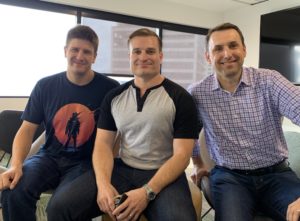(Kenny Daniel and Diego Oppenheimer)
Tim Porter opens Season Two of Founded and Funded, with Algorithmia’s founders, Kenny Daniel and Diego Oppenheimer. This duo started Algorithmia in 2014 and teamed up with Madrona, working out of our office for a while as they got off the ground. The team has made huge strides since their initial algorithm marketplace. Corporations and government institutions now turn to Algorithmia to enable them deploy AI models and run them at scale.
Kenny and Diego met in college at Carnegie Mellon and stayed in touch as they went very different directions – Kenny to do a PhD and Diego into business at Microsoft.  They came back together to bring the power of academia to business and started the company to unlock the power of algorithms.
They came back together to bring the power of academia to business and started the company to unlock the power of algorithms.
They talk about everything from the six month backpacking trip with a beat up laptop that was the genesis of the company to building a distributed team (by happenstance) to where we are in the adoption of machine learning and intelligent applications in this wave of innovation.
Also available on all your favorite podcast platforms.
